Gluten-Free Salmon Cakes
Do you remember your first taste of freshly caught fish? Mine was a childhood trip to Mount Rainier and the Pacific Ocean back in the day. Through a chain of vacation events, a new acquaintance served us fresh-caught salmon and homemade applesauce in a carpeted dining room on a weekday at noon. What? Memories like that stick, along with extra details, apparently. A decade of my life without knowing salmon, and one day I taste it fresh like this? Memory made. While it was another ten before having salmon again and another ten more before making it, recipes like this one for gluten-free salmon cakes are food memories my family wants repeated.
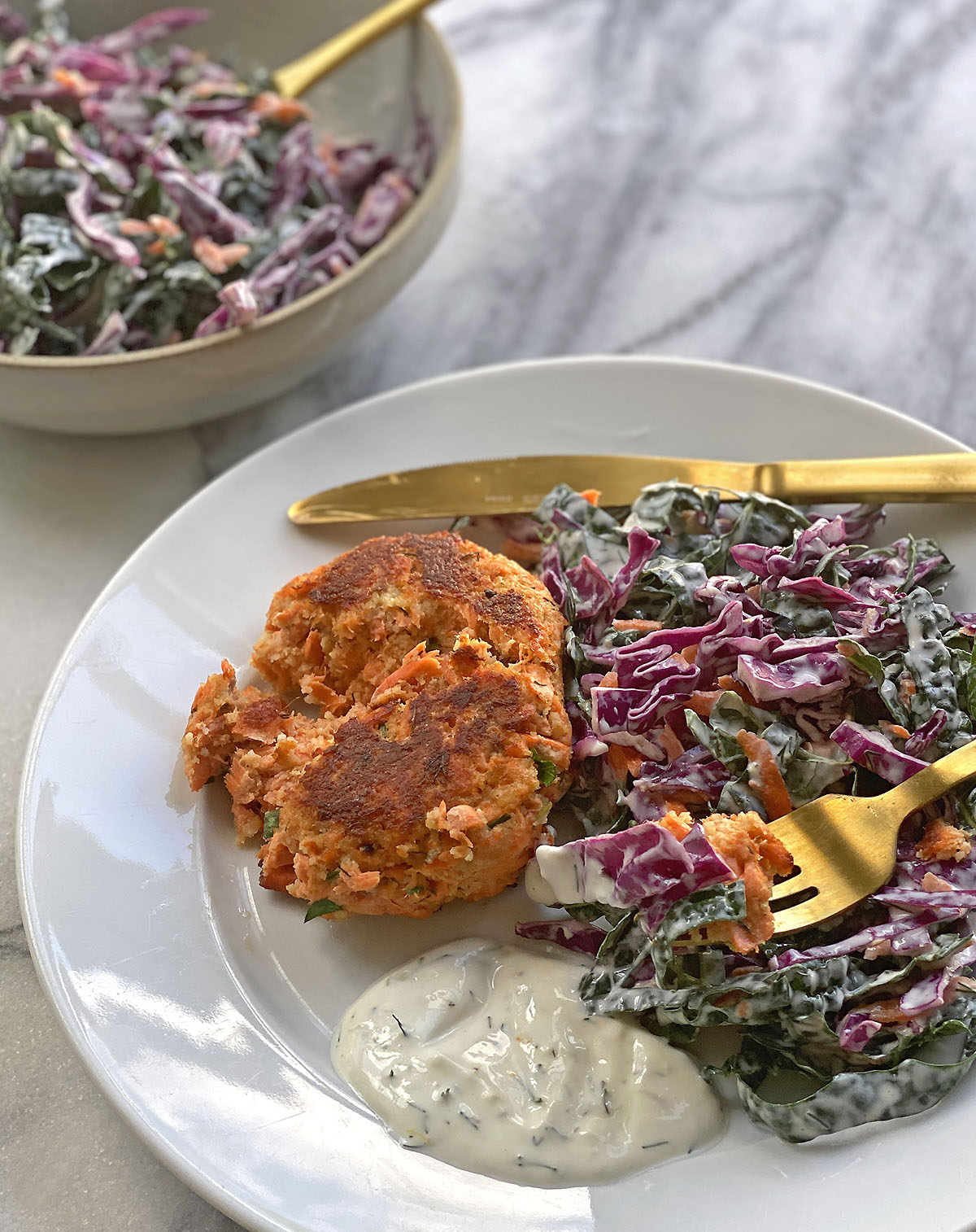
Remember when you made those salmon burgers on red cabbage slaw, Tim recently asked? Or how about those parchment-wrapped pouches with bok choy and salmon, said me to me? Yes, yes, I do. It’s about time we get these meals back up and running and these gluten-free salmon cakes on the blog!
Where to buy your salmon for these gluten-free salmon cakes?
Sourcing salmon has been hard these last years, at least for me! Before 2020, I felt like I was consistently in a grocery store with my personal chef work and home needs. Often, I’d talk to the fishmonger at my Whole Foods and my co-op to hear what was coming for fresh and wild-caught salmon in the summer. Similar to how I live for the perfect August peach, the arrival of later summer wild-caught varieties was what my clients and I were waiting for. Then came the pandemic, and all that screeched to a stop. Not only did fishmongers stop working the same hours or at fish counters altogether, but I began ordering groceries online, removing the conversations. I couldn’t ask why something looked different or pick it out myself.
What did I do about it? Honestly, not much. We haven’t had much salmon for the last couple of years because it was underwhelming when we did. That is until this past summer when I tried Butcher Box. I was skeptical because frozen meat is not my go-to, and it felt like what I was getting would be similar to what is in grocery stores. I was so wrong.
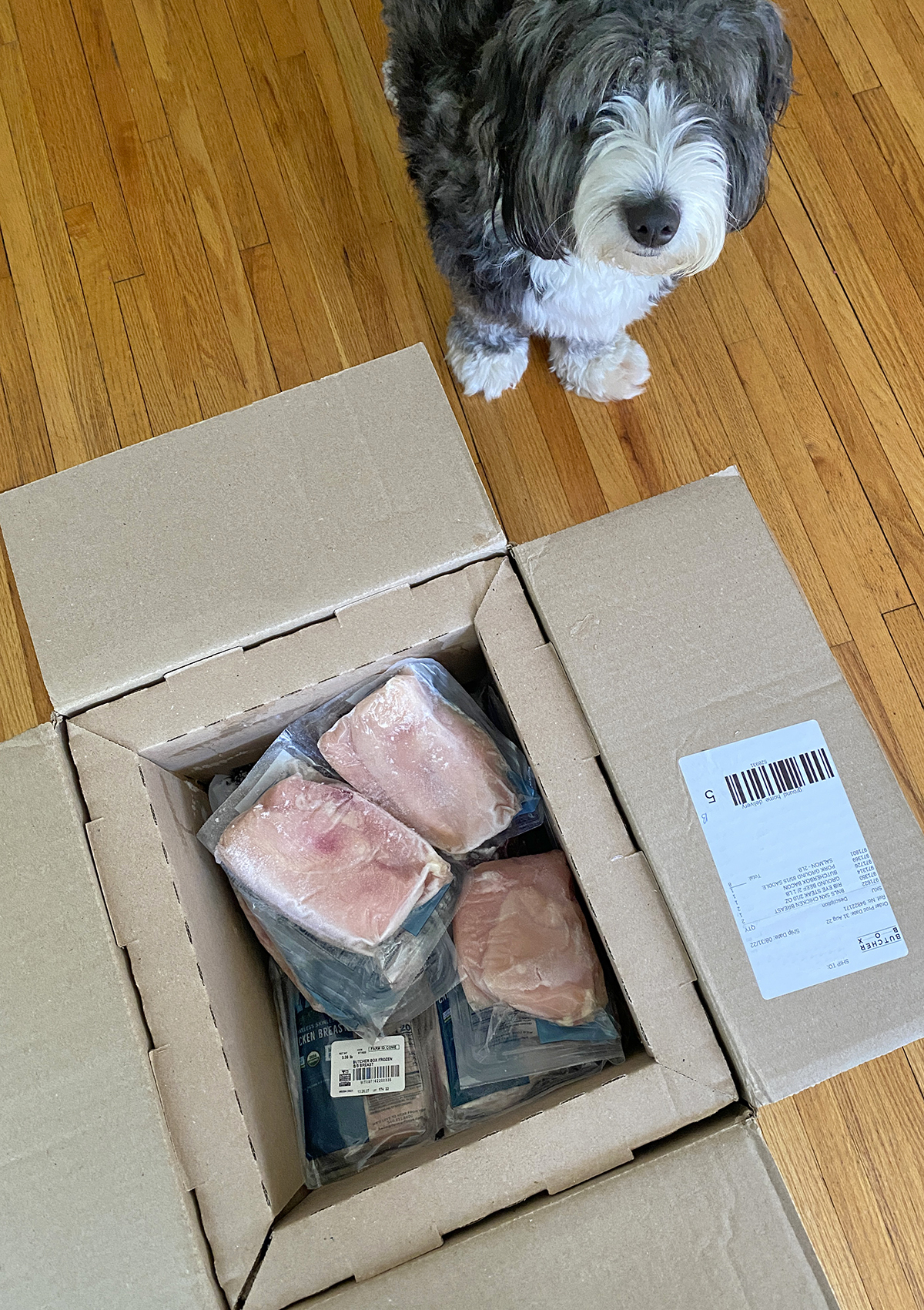
Why Butcher Box has me rethinking how I buy all the meat!
- Taste – everything I’ve had from Butcher Box has been delicious. Period. This feels like it could be an overstatement when they offer so many options, but I don’t get paid to say that, and I haven’t tried it all! So far, I’ve had shipments of grass-fed ground beef, grass-fed rib-eye steak, wild-caught sockeye salmon, organic bone-in chicken thighs, organic boneless chicken breasts, and humanely raised crate-free ground pork and bacon.
- Sustainability – Butcher Box’s wild-caught sockeye salmon is from Bristol Bay, Alaska. This area is known as America’s fish basket because it’s the most productive salmon ecosystem in North America. This beautiful watershed that drains its many river systems here is home to over 29 fish species, including sockeye, coho, Chinook, chum, and pink salmon, according to the EPA! In addition, a third-party certification, Responsible Fisheries Management (RFM), provides assurance and standards for sustainable fishing and traceability. When I received my sockeye salmon, I got a link on the package from Butcher Box to show me the river, the window for the “landed” date, and the port my fish came from, Legit Fish. I haven’t had this much information about fish on my plate, ever. And it feels good.
- Quality – pre-frozen protein at my grocery store has never been my first choice – for the way it looks and tastes. But I’ve changed my opinion about frozen meat because of Butcher Box’s quality. Consequently, their freeze-to-keep fresh process, coupled with the high standards of fisheries and farms, which also care to take extra steps, must be the difference.
- Convenience – First, Butcher Box’s meat comes to my front door. Second, I’m getting high-quality meat from one place. Both reasons have given me a new way to stock what I want to eat easily. I’m always looking for and trying local options and will continue to do so when buying fresh or I don’t have what I need in my freezer. As for the salmon, I couldn’t be more thrilled to have it back in our rotation.
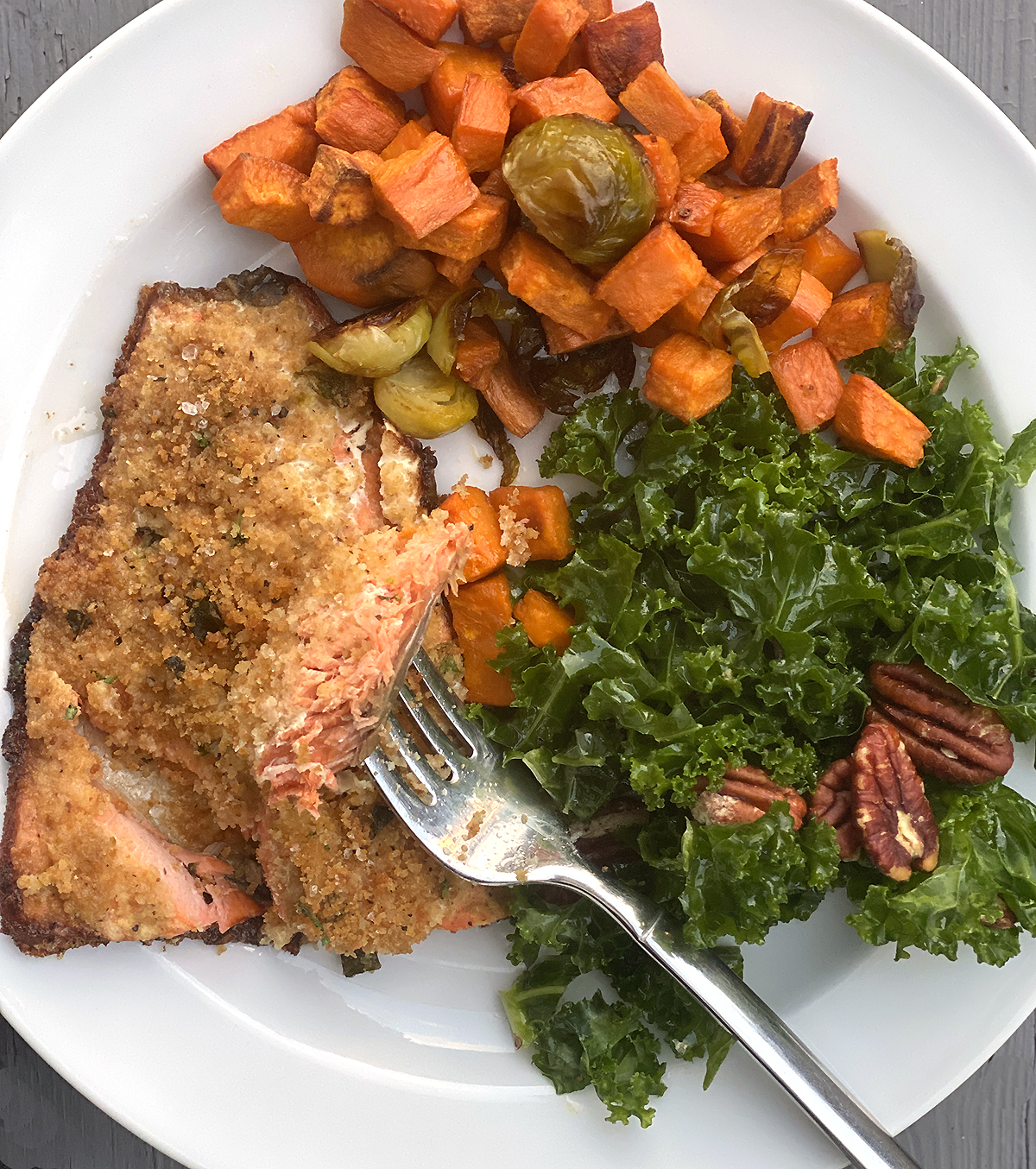
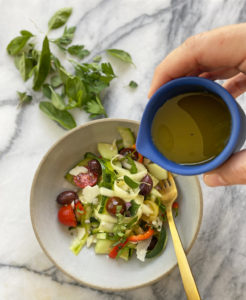
What’s the difference between farm-raised and wild-caught salmon?
Farm-raised salmon grow in tanks and sometimes freshwater pen enclosures. It’s a light pink-colored fish and usually Atlantic salmon. These salmon have more fat since they don’t make the journey and are mild in taste as they’re bred only for eating. Additives like red dye or non-synthetic colorants make the farmed fish pink instead of its natural gray color. Unfortunately, farm-raised salmon often contain pollutants and require antibiotics to fend off disease from their crowded enclosures.
Wild-caught salmon is caught in its natural habitat with lines, nets, and gear that doesn’t impact the ocean floor. Since they eat in the wild, there are no additives or antibiotics. Wild-caught salmon is dark pink/red color from the krill and shrimp they eat. However, wild-caught fish can be affected by pollutants in the water and from the fish they consume. What we do to the environment affects animals and our ecosystem, which gives back to us when we eat.
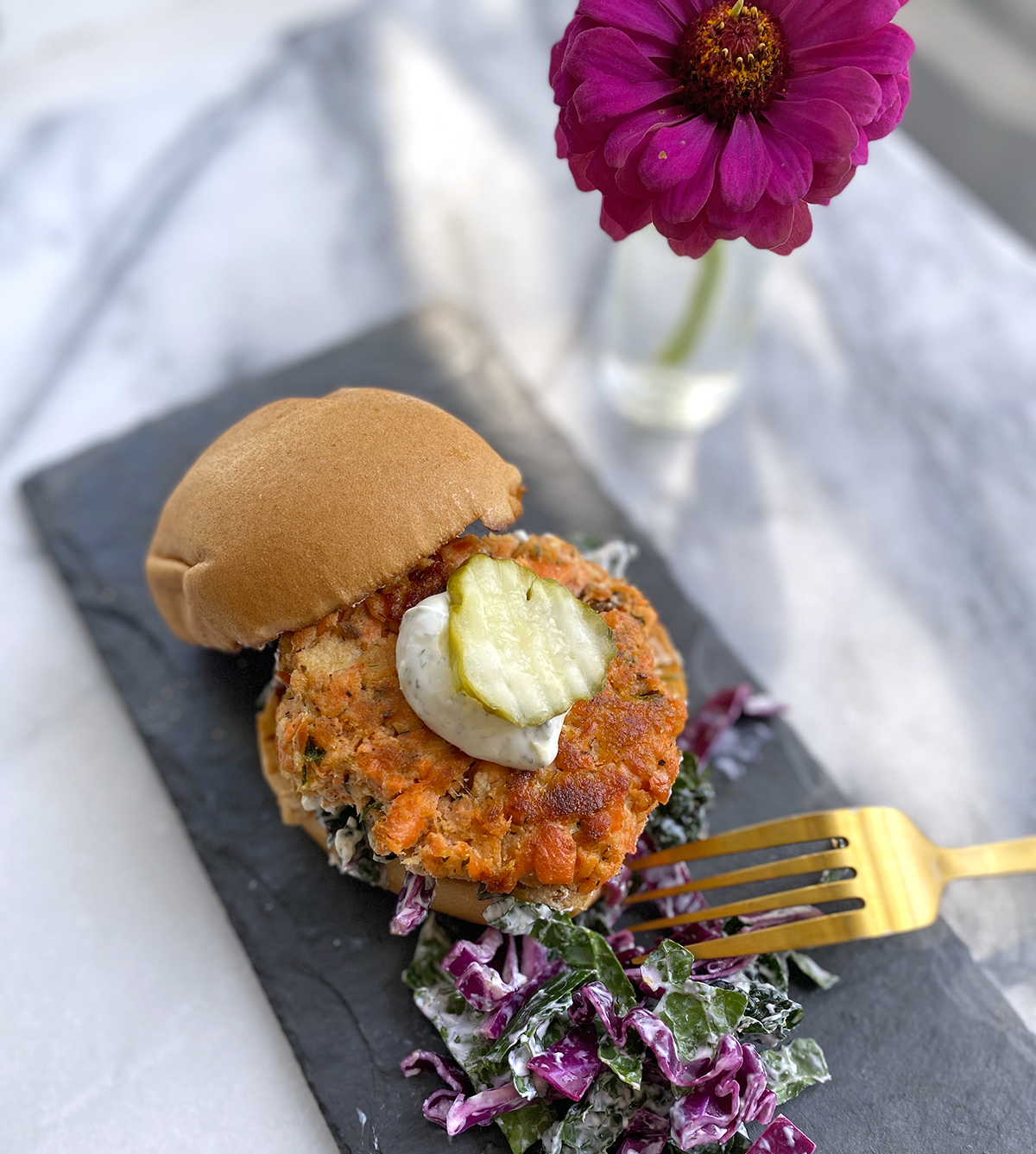
The whole journey of what to buy and when is complicated. But I want to know what I’m eating, don’t you? Plus, I love salmon and hope my kids and their kids will get to eat it too. For more on my ingredients sources, check out my Resource Page.
If you are curious about what kind of salmon you eat, look for the labels. Atlantic salmon available for purchase is always farm-raised. Wild-caught Atlantic salmon are a thing of the past and are protected by law, so you will not find this sold in the United States. Wild-caught salmon, like sockeye, coho, or others mentioned above, should have a label. If you are in a restaurant, you’ll be able to tell by the color. Since wild-caught is a selling point, menus will say so, and the price will reflect it as it should.
How to prep and cook salmon: frequently asked questions
Do not defrost fish in its vacuum-sealed package. This is important safety-wise to thaw fish without vacuum-sealed packaging where deadly bacteria can form easily when sealed fish temperatures drop under 38°. Once fish is unsealed and exposed to oxygen, it won’t create bacteria as it thaws.
With frozen salmon, I remove all packaging and place filets in a glass-covered dish to thaw overnight. If you need to thaw fish within an hour, remove all packaging, put fish into a new tightly sealed bag, and set it in cold water for 30 minutes. Then change out the water and do it again. This method usually works within an hour.
No, you do not need to rinse your salmon for flavor, and shouldn’t. Any raw meat contains bacteria until cooked, therefore it’s also a good idea not to splatter meat juices by rinsing it.
Look over your salmon and run your finger over the top surface to feel for bones poking out of the meat. Using a kitchen tweezer, pull out bones. If you have a glass of water nearby, it’s easy to dip your tweezer into the water to release bones and continue. See the video below!
To roast salmon, preheat the oven to 400°. Lay filets on a parchment-lined baking sheet, or lightly oiled, and place filets skin side down. Lightly brush salmon with olive oil and cover with sliced lemons or herbs if you wish. Roast for 12 minutes and check for doneness. A little pink inside is ok, but you want it to flake easily with a fork. Let your salmon cool, and remove skin and any herbs or lemons when ready to handle. Eat as is or flake fish into a bowl using hands or two forks. Proceed with your recipes!
How to remove salmon bones – watch this video!
Let’s get to making these gluten-free salmon cakes!
Gluten-Free Salmon Cakes
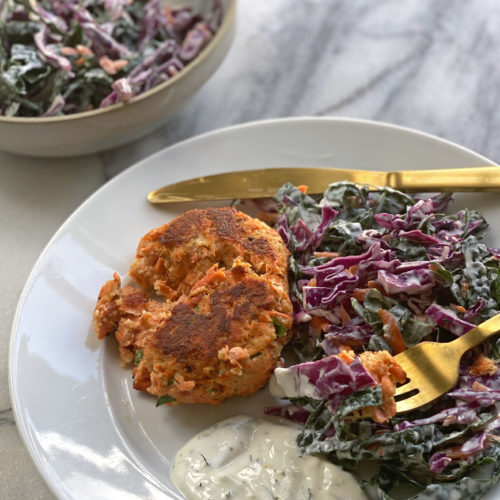
Ingredients
Salmon Cakes
- 1 1/2 cups flaked cooked salmon, about 3/4 lbs raw salmon before roasting and removing the skin (You can make salmon cakes with canned salmon if you like. Drain three 6-oz cans of wild-caught salmon in a colander, and separate with a fork to drain completely.)
- 3/4 cup gluten-free bread crumbs
- 2 eggs
- 1 tablespoon lemon juice
- 1/2 teaspoon lemon zest
- 1/4 cup chopped dill, parsley, and chives (You can use whatever herbs your have or just dill!)
- 1 tablespoon dijon mustard
- 1 tablespoon chopped dill pickles (If using a product like Grillo pickles, use any pickled herbs and garlic as well.)
- 1 tablespoon mayonnaise
- 3/4 teaspoon salt
- 1/8 teaspoon cracked pepper
- optional gluten-free toasted buns
Kale and Cabbage Slaw
- 1/2 bunch kale chopped into thin ribbons, about 6 big leaves
- 2 cups red or green cabbage sliced into thin ribbons
- 1 medium peeled carrot shredded on a box grater (optional)
Yogurt Dill Sauce
- 1 cup yogurt
- 1 tablespoon fresh dill chopped finely
- 1 teaspoon lemon juice
- 2 teaspoons olive oil
- 1/2 teaspoon salt
- 1 teaspoon clove of garlic crushed
Instructions
Salmon Cakes
- In a medium mixing bowl, combine all salmon cake ingredients and gently mix with two forks until all ingredients are incorporated, don't over-mix. If really dry and not holding together, you can add a teaspoon of water or a little bit more mayonnaise.
- Form mixture into 5 equal patties.
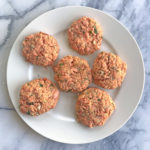
- Heat a frying pan with about 1 tablespoon of olive oil. I'm using an all-clad pan, so I use about 1 tablespoon of olive oil and let it coat the whole bottom of the pan. Using a cast-iron or non-stick pan, you won't need as much fat.
- Place patties into your pan, leaving space to turn, you might not be able to do all 5 at a time.
- Fry your salmon cakes for 3-4 minutes and carefully flip. If your pan is dry, add a drizzle of oil in between the salmon cakes to keep the salmon from sticking and enable you to flip them more easily.
- Fry the second side for 3-4 minutes more and check the bottoms. If there is a lightly browned crust on both sides, peek inside of one to see if warm and cooked throughout.
- If you are making in batches, put your fish cakes in a warming drawer or oven turned to 250-300° while you make the next batch.
- When ready to eat, serve fish cakes with slaw and extra yogurt dill sauce. See instructions below. Or put your salmon cakes on a toasted gluten-free bun with dill sauce and extra pickles or slaw on top.
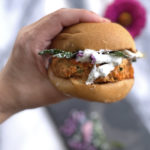
Kale and Cabbage Slaw
- Toss together kale, cabbage, and carrots if you are using them. Add spoonfuls of yogurt sauce until the slaw is coated lightly. Sprinkle with salt and pepper and let sit while you make the salmon cakes.
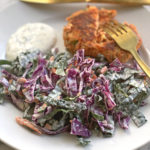
Yogurt Dill Sauce
- Whisk together all ingredients. Add a portion to your slaw ingredients as directed and set aside the reast at room temperature while you cook the salmon cakes.
Equipment
This post contains affiliate links to products I know and love. I recommend any of them for this recipe!
Nutrition
Enjoy!

Last Updated on October 21, 2022 by Heather Bursch

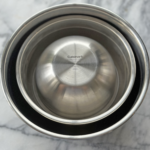
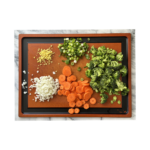
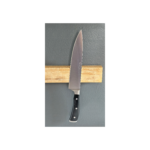



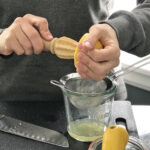
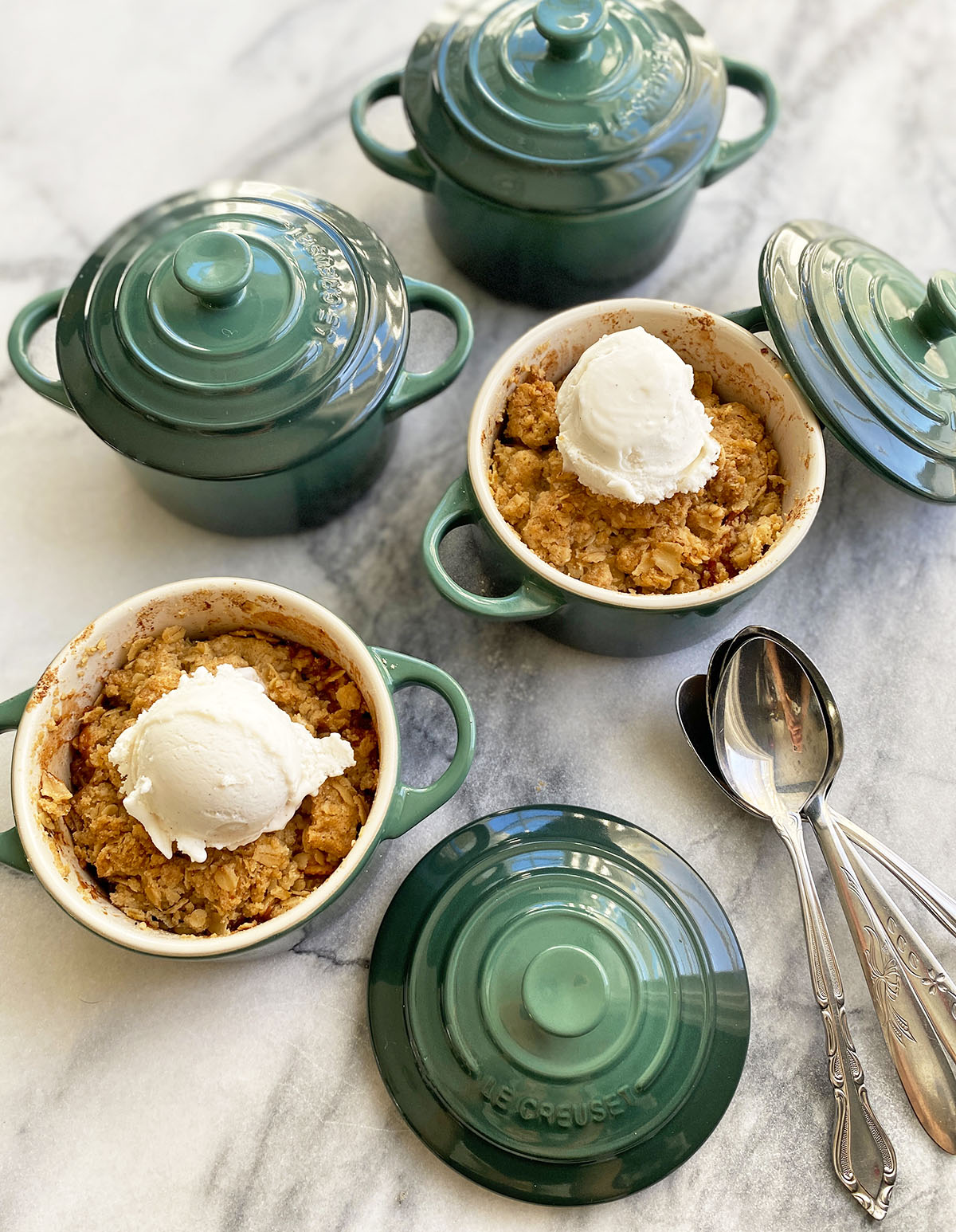
One Comment